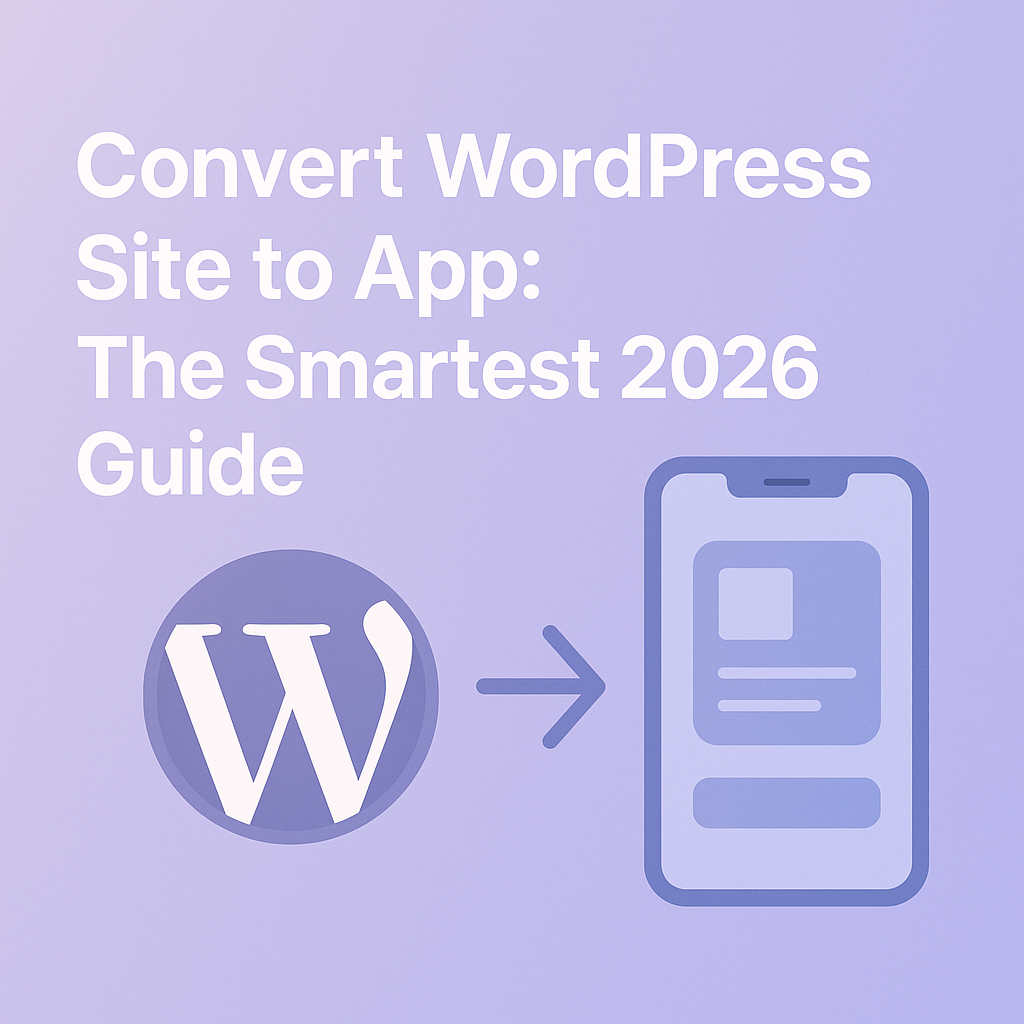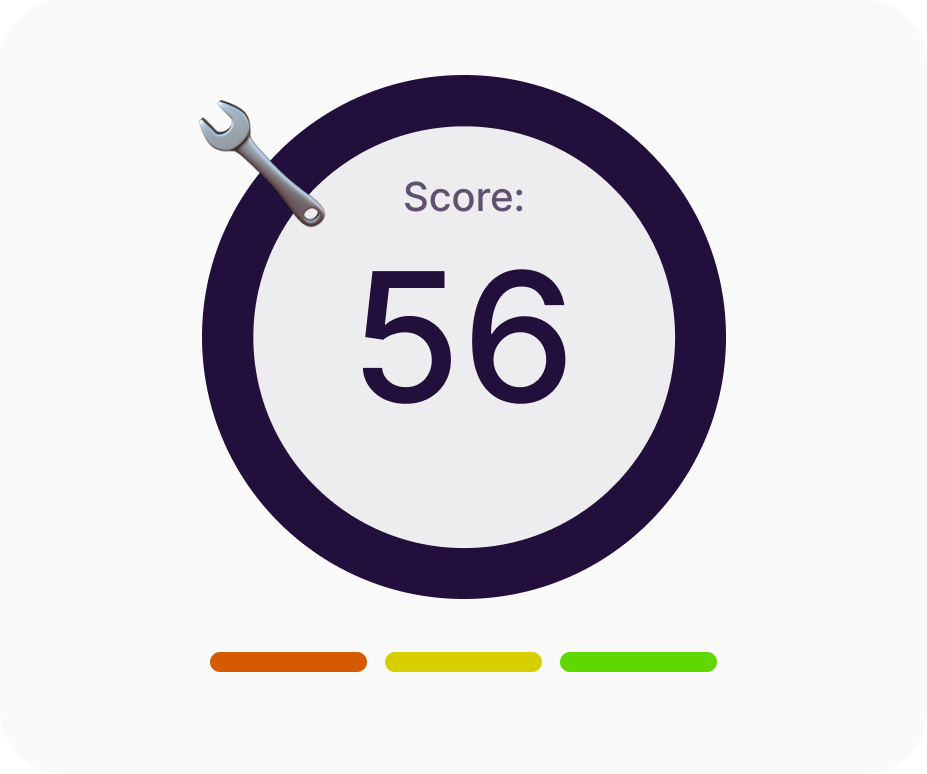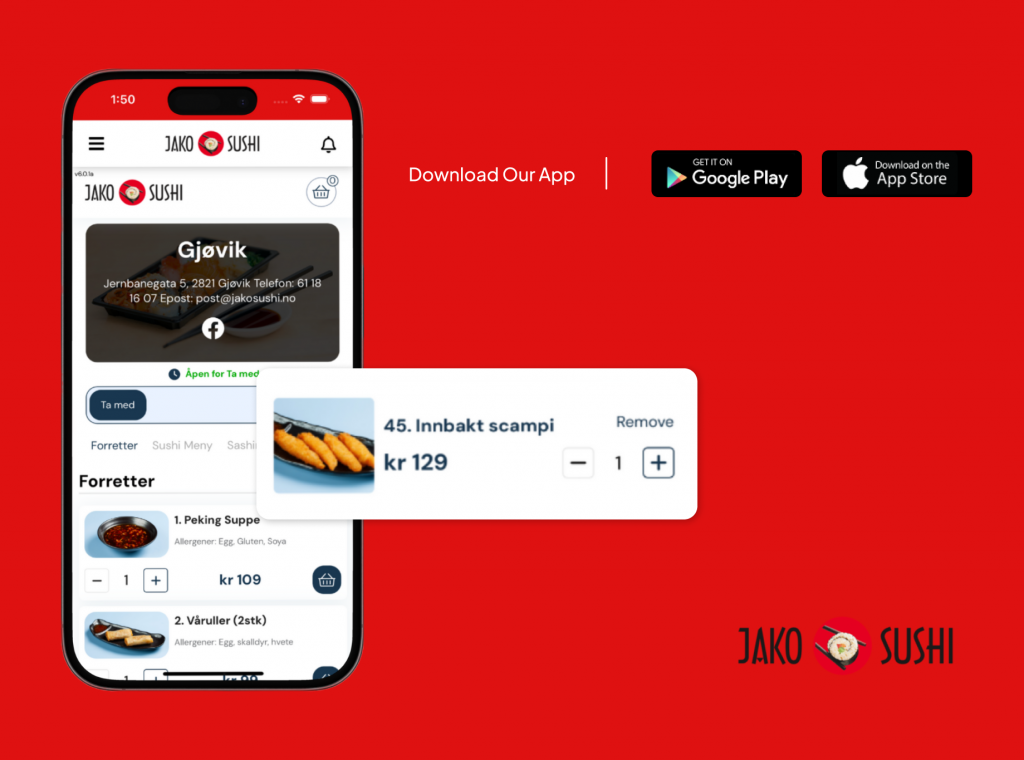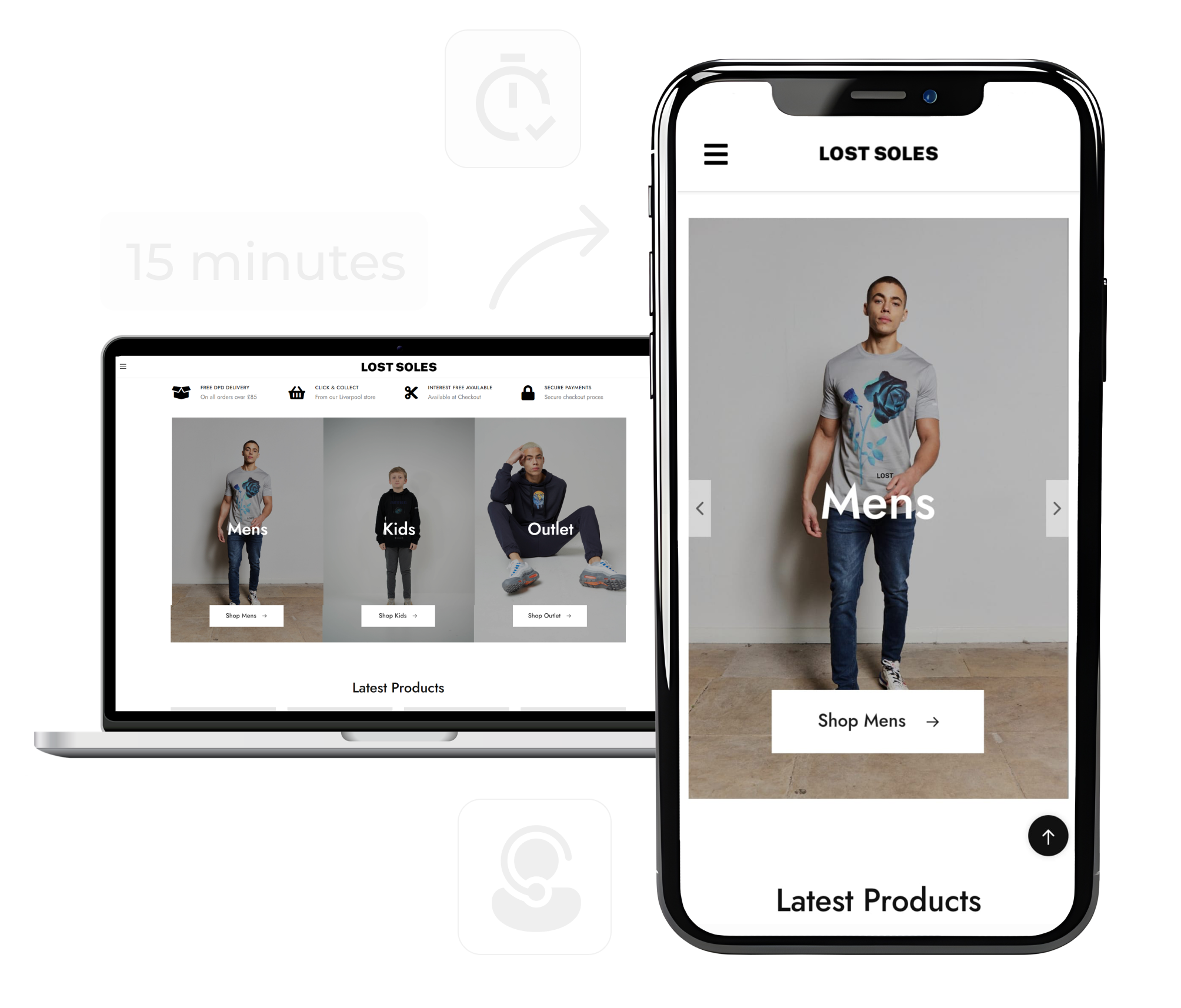
If you’ve ever wondered whether it’s finally time to turn your WordPress site into an app — the answer is yes, and for good reason.
In 2025, over 73% of all eCommerce transactions happen on mobile devices, and that number is expected to pass 80% by 2026. Consumers no longer “visit websites”; they live inside apps. From shopping and banking to local bookings, the mobile app experience has become the new storefront.
Yet, thousands of small business owners with perfectly functional WordPress or WooCommerce sites still hesitate. The fear usually sounds like this:
“I’d love to have an app, but I can’t afford to rebuild everything.”
The truth is — you don’t have to.
Converting your WordPress site to a mobile app today is nothing like starting from scratch. Done right, it’s fast, affordable, and opens the door to loyalty, repeat orders, and a seamless brand presence your competitors can’t match.
Let’s be honest — the web is full of “convert your site to app in minutes” promises. Some are half-true; most are over-simplified.
Here’s what business owners usually face when they start exploring their options:
❌ Cost Shock: Custom app quotes easily reach $30,000–$80,000, even for basic functionality.
❌ Complexity: Many “DIY” app builders break your WordPress plugins or ignore WooCommerce features entirely.
❌ App Store Rejections: Apple and Google now have stricter rules. Apps that look like plain mobile websites often get rejected.
❌ Maintenance Gaps: Launching an app is easy — maintaining it across iOS and Android updates is not.
So, the real question isn’t “Can I convert my WordPress site to app?”
It’s “How can I do it smartly — without rebuilding everything or losing what I’ve already built?”
When people think of “converting a WordPress site to an app,” they often imagine a full redesign, new infrastructure, and endless developer communication.
But smart conversion is the opposite. It’s about translating, not rebuilding.
Think of your WordPress site as a living system — products, plugins, content, users, and orders all working together. A smart conversion wraps that system in a native app experience, keeping its heart intact while enhancing how people interact with it.
Here’s what it really means in 2025:
Your existing WordPress setup already has years of effort behind it — branding, SEO authority, customer data, and structure. Smart conversion tools build directly on top of that foundation, syncing every change automatically.
If you update your store’s banner, add a new post, or launch a discount — it appears in the app instantly.
The smartest approach uses API and live-sync integration, not screenshots or static web views. This allows your mobile app to fetch real-time product data, show personalized content, and even track logged-in user sessions seamlessly.
A mobile app should extend what your WordPress site does best.
Add layers that web browsers can’t handle well — faster navigation, offline caching, push notifications, and native payment flows.
Unlike drag-and-drop builders, full-service solutions (like ShopApper) take care of all the technical legwork — connecting your WooCommerce database, submitting to stores, and maintaining compliance — while letting you focus on your customers.
Smart conversion, in short, means getting an app that feels handcrafted without paying for custom development.
It’s how small businesses now build serious mobile presence without breaking their budgets or their workflows.
Let’s compare the main paths available for anyone wanting to convert a WordPress site to app today:
| Method | Typical Cost | Launch Time | Ownership | Flexibility | Maintenance |
|---|---|---|---|---|---|
| Custom App Development | $25K–$80K | 3–6 months | Full | Very High | Complex |
| DIY No-Code Builders | $0–$150/mo | 1–2 weeks | Limited | Low | You |
| AI-Generated App Builders | $200–$500/mo | 2–7 days | Moderate | Medium | Risky |
| Full-Service Conversion Platforms (e.g., ShopApper) | $69–$999/mo | 1–7 days | Full | High | Managed |
Platforms like ShopApper belong in the last category — full-service converters.
Instead of handing you a dashboard and saying “good luck,” they prepare your mobile app directly from your live website, handle store submissions, and provide continuous sync and updates.
It’s the middle ground between building from scratch and relying on risky drag-and-drop app builders — with human guidance, developer support, and affordable monthly pricing.
(No bragging here — just a clear definition of what’s working for small businesses today.)
For small businesses, going mobile used to mean choosing between two extremes: spend tens of thousands on a custom app or rely solely on a responsive website.
Neither was ideal.
That’s why converting a WordPress site to an app is such a turning point — it finally makes app ownership accessible, sustainable, and scalable for everyday business owners.
Let’s unpack the deeper reasons why small and mid-sized businesses win the most from this transition:
In 2025, users spend over 88% of their mobile time in apps, not browsers.
They scroll through stores, order food, book appointments, and even read news inside apps.
If your business isn’t present there, you’re simply missing where customers actually make decisions.
Websites are for discovery — apps are for loyalty.
Once someone downloads your app, reordering or rebooking takes seconds. Their data is saved, payment is instant, and communication is direct. That’s why small stores using mobile apps see retention rates up to 4x higher than their website-only peers.
Email open rates are falling below 20%. Push notifications, however, average 90% open rates and 40% click-throughs when personalized.
It’s direct, personal, and costs nothing per send.
Unlike social media algorithms or paid ads, your app sits on your customer’s phone — fully owned by you. No competition, no distractions, no bidding wars for visibility.
Traditional app development takes months and eats budgets.
Converting a WordPress site costs a fraction of that — often less than a single paid campaign — yet gives back daily through repeat orders, saved ad costs, and user data.
Customers subconsciously trust brands that “have an app.”
It signals stability, professionalism, and ease of use. For local stores or niche shops, that small icon on the home screen builds a big perception boost.
WordPress plugins, WooCommerce inventory, existing login systems — all continue to work. No need to move away from what’s already generating your revenue.
Small businesses don’t just “join” the mobile ecosystem anymore — they compete in it effectively by converting what they already own into an app.
A good conversion doesn’t just give you “a smaller website inside a phone.”
It transforms your digital presence into a richer, faster, and more personal experience — often unlocking features that web owners never realized were even possible.
Here’s a deeper look at the layers you gain when you convert your WordPress site to app:
Every product, blog post, or price change on your WordPress site is mirrored in the app automatically — no manual updates, no data loss.
This is crucial for WooCommerce stores that manage hundreds of SKUs and flash promotions.
Mobile apps can do what browsers can’t:
Swipe navigation
Tabbed browsing
Native menus and transitions
Faster image loading with local caching
Smooth product galleries and animations
These small UX details make a big difference — your store feels premium instantly.
You can set triggers like:
“User hasn’t ordered in 7 days → send a personalized discount”
“New product launched → notify app users instantly”
Push notifications outperform email, ads, and SMS combined when it comes to re-engagement.
Native apps integrate with Apple Pay, Google Pay, or saved cards — leading to faster checkouts and 30% higher order completions.
Cart abandonment, which averages 68% on web, drops dramatically on mobile apps.
Customers can still browse products, add to cart, or view content even when traveling or offline. The app syncs automatically once back online — something websites can’t do.
From the app icon to splash screens, colors, and fonts — everything aligns with your brand identity.
Your app doesn’t live under a builder’s label; it’s your app, listed under your business name on both app stores.
Modern converters like ShopApper are built with compatibility in mind.
Whether you use memberships, booking systems, or multi-vendor plugins, your app mirrors them seamlessly, making it ideal for service marketplaces and eCommerce alike.
Smart conversions come with SSL, API security, and adherence to App Store privacy policies. You stay compliant without having to manage updates or certifications manually.
Modern converters like ShopApper are built with compatibility in mind.
Whether you use memberships, booking systems, or multi-vendor plugins, your app mirrors them seamlessly, making it ideal for service marketplaces and eCommerce alike.
Smart conversions come with SSL, API security, and adherence to App Store privacy policies. You stay compliant without having to manage updates or certifications manually.
App dashboards let you monitor installs, session times, and repeat order rates — crucial data for refining your customer strategy.
A properly converted app is future-ready — easily expandable with loyalty features, in-app chat, AI recommendations, or delivery tracking later on.
When you add up all these features, it’s clear:
Converting your WordPress site to an app isn’t a lateral move — it’s an upgrade in every measurable way.
🧩 Read related: Must-Have Features for Your WordPress Mobile App →
Even with smart tools, there are pitfalls that can harm performance or app-store approval.
These platforms often miss essential WooCommerce hooks or WordPress login systems. Your app might look right but fail during checkout or account login.
Apple rejects thousands of “cloned websites” every year under guideline 4.2 and 2.1. Make sure your app includes real native components (push, navigation, tab bars, etc.).
Apps must handle images, scripts, and data differently. Full-service converters usually optimize this automatically, but DIY tools may not.
Publishing the app is just the beginning. You’ll need ongoing updates for iOS/Android versions, store policies, and plugin compatibility.
Answer a few quick questions and get a custom report on your app potential, missed opportunities, and where to level up.

Food & Restaurant (delivery): Jako Sushi — 1220% ROI
A Norwegian sushi brand needed a fast app that integrated with its website and POS. ShopApper delivered a native app with flawless sync, performance optimization, and ongoing support. Result: 32% of orders now come from the app and a 1220% ROI within months. Push drives timely specials; frictionless checkout encourages repeat orders. (This aligns with category-level push opt-in rates, where Food & Drink performs well on iOS and Android.)

A common misconception is that apps replace websites.
In reality, they boost your SEO when done right.
Here’s how:
Deep Linking: Your app pages connect to your web URLs — Google recognizes them and rewards consistent indexing.
Smart Metadata: Product descriptions, structured data, and titles remain shared between site and app.
In-App Browsing: Helps Google measure engagement and user signals (time on page, return visits).
App Store Presence: Increases brand visibility and credibility — your business appears on more search surfaces.
You don’t lose your SEO; you extend it.
🧩 Read related: From WordPress Site to Mobile App — The Publishing Checklist for iOS & Android →
The deeper value of converting your WordPress site to app lies in how customers experience your business.
Think of it this way:
Websites are like storefronts — people visit.
Apps are like relationships — people return.
The modern consumer expects personal touch, convenience, and instant interaction.
Whether it’s tracking an order, checking loyalty points, or getting notified about new stock — apps make it possible in one tap.
And for small businesses, this isn’t an expense. It’s a growth engine that pays for itself through repeat sales and reduced marketing costs.
The global mobile commerce market will exceed $6.3 trillion by 2026 (Statista).
Google has already switched to mobile-first indexing for every website.
And AI-driven recommendation systems increasingly prioritize app-based interactions and engagement metrics.
That means businesses with both a strong WordPress site and a live mobile app will appear more active, more trustworthy, and more discoverable — both in search and in the app stores.
If your business wants to keep pace with how customers actually buy, browse, and connect — now is the time to prepare.
Converting your WordPress site to an app isn’t just a tech decision — it’s a business advantage.
You don’t need to hire developers, rebuild your brand, or risk SEO loss.
You just need a system that brings your site’s existing power to a mobile-native experience people enjoy using.
Whether you run a local shop, an e-commerce store, or a community platform — the smartest move in 2025 is clear:
Don’t rebuild. Convert smarter.
Take the first step toward an app for your online store. Schedule your free call and see how easy it is to get started with a full-service solution like ShopApper.

Features
Start By Industry



I’m Ece, your Account Manager. I’m eager to learn about your business and assist you in achieving your goals.
Please share some info about your business so I can be fully prepared to answer your queries. I’ll reply within 15-20 minutes. Thanks! ![]()